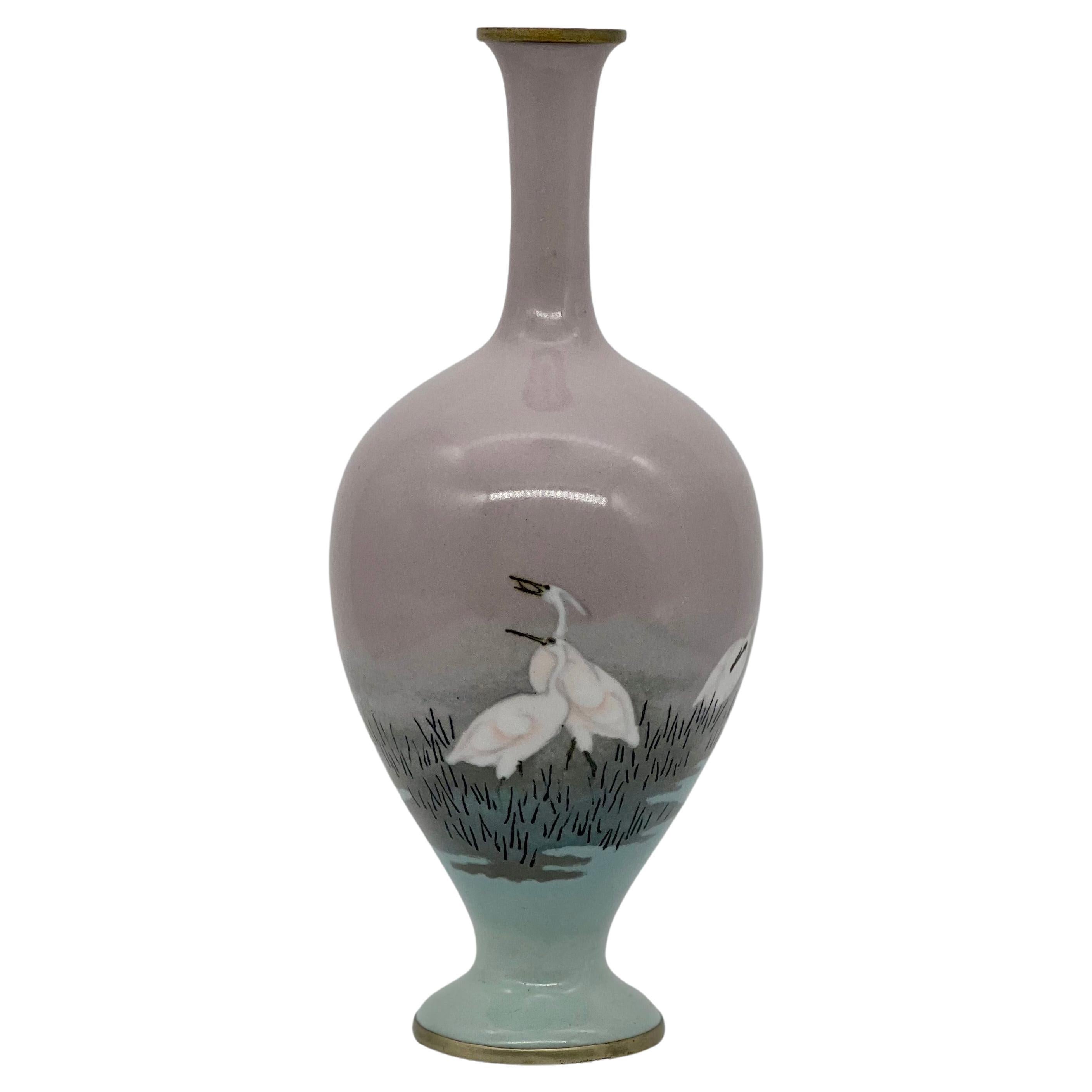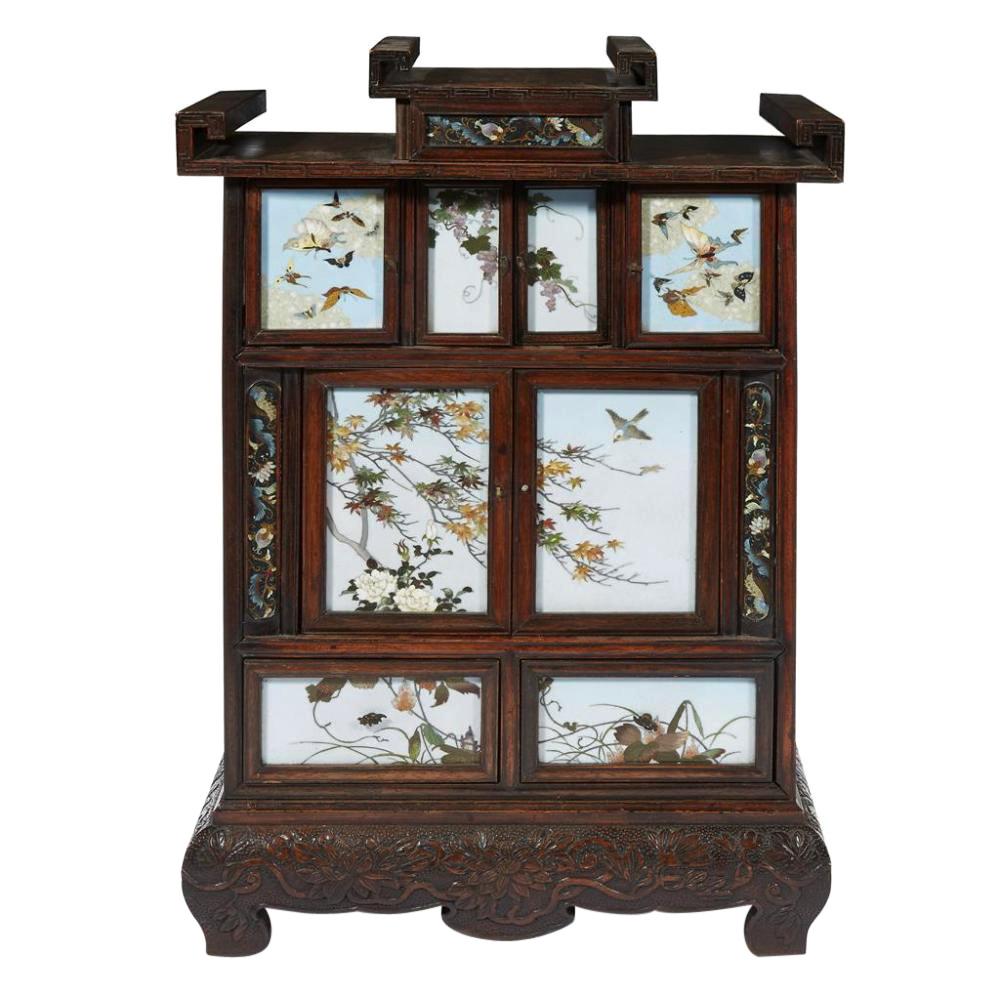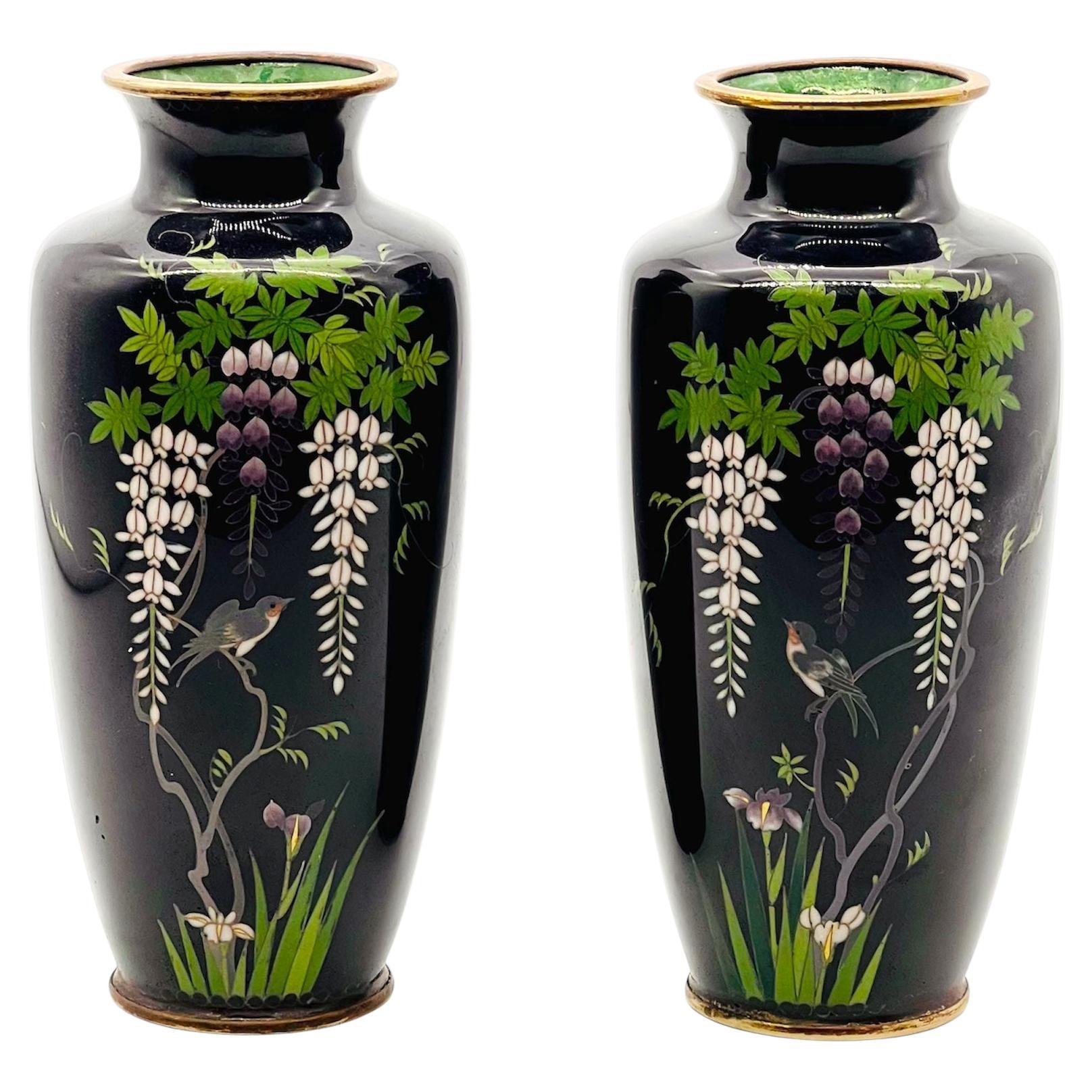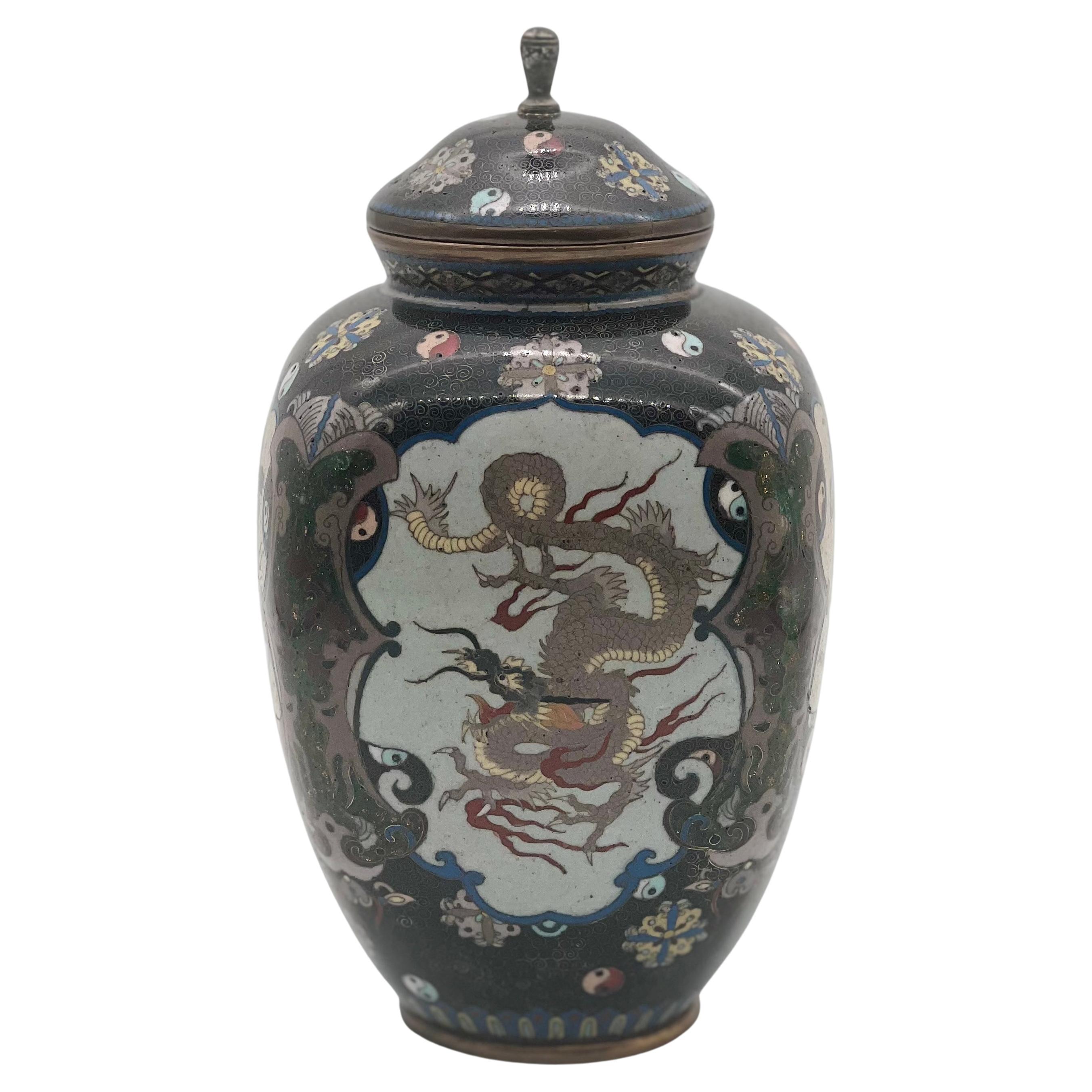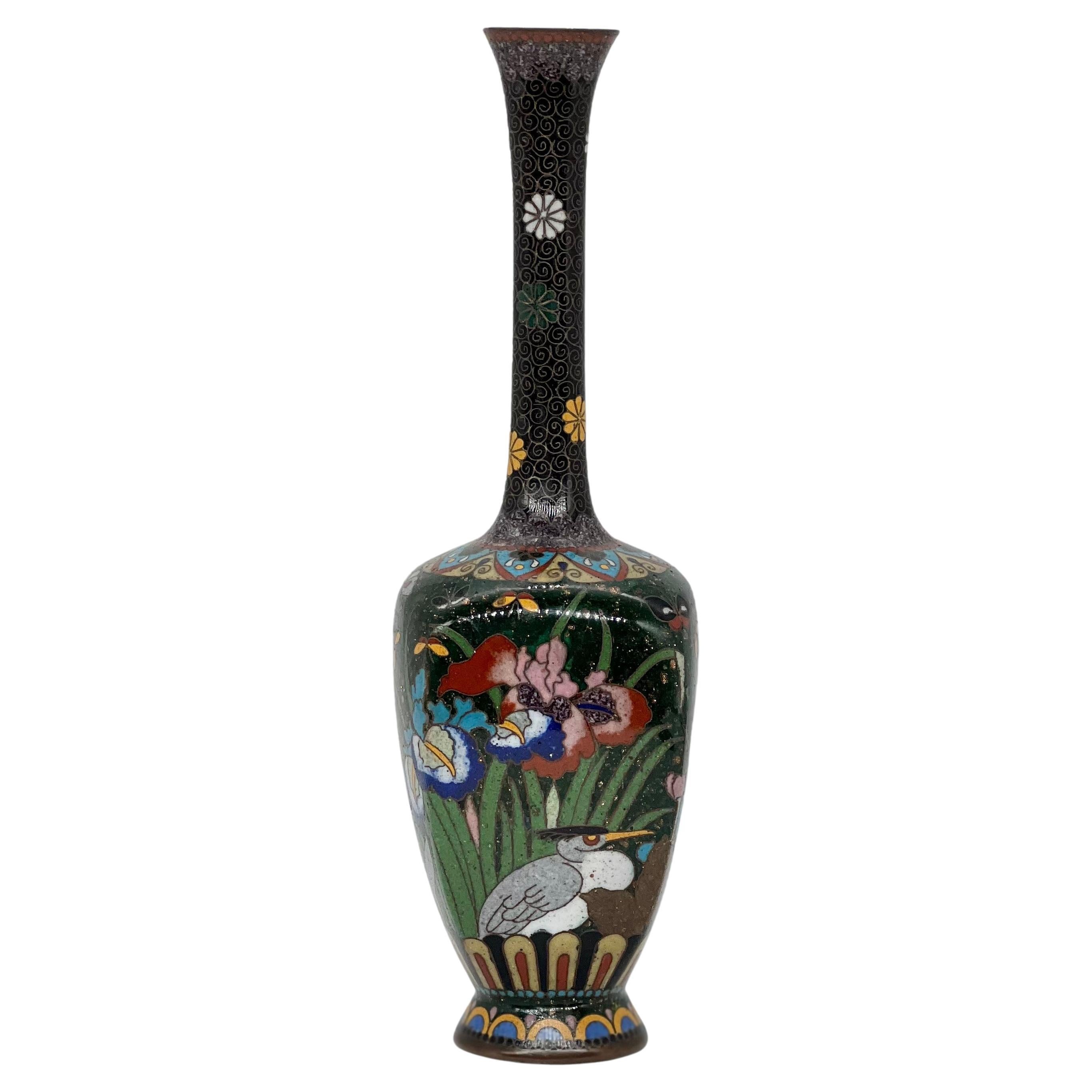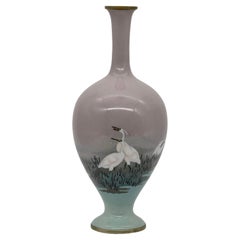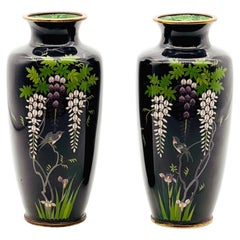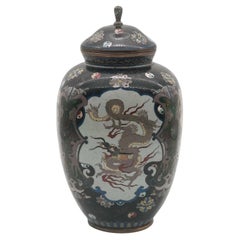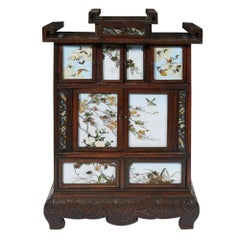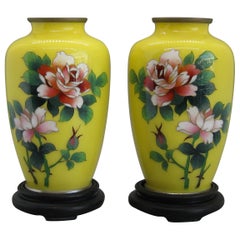Items Similar to A Fine Japanese Cloisonne Enamel Vase in style of early Namikawa Yasuyuki
Want more images or videos?
Request additional images or videos from the seller
1 of 18
A Fine Japanese Cloisonne Enamel Vase in style of early Namikawa Yasuyuki
About the Item
A Lovely Edo Period Cloisonne Enamel Vase in style of early Namikawa Yasuyuki works.
Worked in gold wire and decorated in various coloured enamels depicting floral patterns, gilt rims and foot.
In very good condition commensurate with age. No damage or restoration.
Size: H-7.5 cm W- 6.5 cm, diameter to the bottom 4 cm
- Dimensions:Height: 2.96 in (7.5 cm)Width: 2.56 in (6.5 cm)Depth: 2.96 in (7.5 cm)
- Materials and Techniques:Enamel,Cloissoné
- Place of Origin:
- Period:
- Date of Manufacture:1850
- Condition:Wear consistent with age and use.
- Seller Location:London, GB
- Reference Number:1stDibs: LU8001243153192
About the Seller
No Reviews Yet
Vetted Professional Seller
Every seller passes strict standards for authenticity and reliability
Established in 2001
1stDibs seller since 2023
13 sales on 1stDibs
- ShippingRetrieving quote...Shipping from: London, United Kingdom
- Return Policy
Authenticity Guarantee
In the unlikely event there’s an issue with an item’s authenticity, contact us within 1 year for a full refund. DetailsMoney-Back Guarantee
If your item is not as described, is damaged in transit, or does not arrive, contact us within 7 days for a full refund. Details24-Hour Cancellation
You have a 24-hour grace period in which to reconsider your purchase, with no questions asked.Vetted Professional Sellers
Our world-class sellers must adhere to strict standards for service and quality, maintaining the integrity of our listings.Price-Match Guarantee
If you find that a seller listed the same item for a lower price elsewhere, we’ll match it.Trusted Global Delivery
Our best-in-class carrier network provides specialized shipping options worldwide, including custom delivery.More From This Seller
View AllFine Japanese Cloisonné-enamel and Musen Vase Attributed to Namikawa Sosuke
Located in London, GB
A magnificent Cloisonné-enamel and Musen Baluster vase attributed to Namikawa Sosuke.
Meiji era (1868-1912), late 19th century.
This vase features an elegant classic form with a sle...
Category
Antique Late 19th Century Japanese Metalwork
Materials
Enamel
A Fine Pair of Japanese Cloisonne Enamel Wisteria Vases. Meiji Era
Located in London, GB
A FINE PAIR OF JAPANESE CLOISONNE ENAMEL VASES.
Meiji Period (1868-1912).
Worked in silver wire of varying gauge with a continuous design depicting birds perched among leafy bra...
Category
Antique 19th Century Japanese Metalwork
Materials
Enamel
A Fine Japanese Cloisonne Enamel Vase and Cover. Meiji Period
Located in London, GB
A Exquisite Cloisonne Enamel Vase and cover
Meiji period -Late 19th C
Exquisite and refined four sided cloisonne vase and cover made in gold and silver wire with dragons and phoen...
Category
Antique Late 19th Century Japanese Metalwork
Materials
Enamel
Fine Japanese Kyoto Shippo Cloisonne Enamel Vase, 19th C
Located in London, GB
A fine Japanese Kyoto Shippo Cloisonne enamel vase 19th C
Meiji Period
JAPANESE CLOISONNE ENAMEL VASE,?decorated with cranes and butterflies amongst lotus and iris blooms reser...
Category
Antique Mid-19th Century Metalwork
Materials
Enamel
A Fine Pair of Japanese Cloisonne Enamel Vases Attr to Ando Jubei.
Located in London, GB
A beautiful pair of Japanese Cloisonne Enamel
vases Attributed to Ando Jubei.
Taisho period. Early 20th Century
worked in silver wire with a phoenix in flight in various colour...
Category
Antique 19th Century Japanese Metalwork
Materials
Enamel
A Fine Pair of Japanese Cloisonne Enamel Vases with Cranes . Meiji Era
Located in London, GB
A Fine Japanese cloisonne enamel pair of Vases.
Meiji period
of a elegant bulbous shape, worked in silver wire and decorated with cranes in flight on a blue background, applied ...
Category
Antique 19th Century Japanese Metalwork
Materials
Enamel
You May Also Like
Japanese Table Cabinet with Cloisonne Panels in the style of Namikawa Sosuke
Located in Atlanta, GA
A Japanese wood and cloisonne cabinet circa Meiji period, late 19th-early 20th century. The small table top cabinet features
a single drawer on top, four small doors with cloisonne panels on the second tier, a pair of larger cloisonne doors on the main level flanked by two skinny panels, and finally two drawers on the low level. It has a scroll carved base and sides as well four pagoda-shape cornices. The cloisonne panels were obviously the work of two different artist studios and were assembled on purpose to demonstrate a mixture of styles. The small top and the two skinny panels on the main level are of an earlier scrolling design that emphasize the wire work; The rest of the eight larger panels were done in a much later and painterly style attributed to Namikawa Sosuke...
Category
Early 20th Century Japanese Japonisme Furniture
Materials
Enamel, Metal
Japanese Wireless Cloisonné Serving Tray Meiji After Namikawa Sosuke
Located in New York, NY
A rare 19th Century Japanese copper serving tray with cloisonne enamel design. The central part of the tray depicts a wireless cloisonne picture, a coastal landscape view with a full moon. The hieroglyphical signature of the artist is in the lower right. The rims and the backside are decorated with floral ornaments. Blue and black color palette. Collectible Oriental Decor And Applied Arts For Interior Design.
Namikawa Sosuke (1847–1910) was a Japanese cloisonné artist,[1] known for innovations that developed cloisonné enamel into an artistic medium sharing many features with paintings.[2][3] He and Namikawa Yasuyuki (no relation)[notes 1] were the most famous cloisonné artists of the 1890 to 1910 period, known as the "golden age" of Japanese enamels.[1] Around 1880 he set up and ran the Tokyo branch of the Nagoya Cloisonné Company.[1] He exhibited his artworks at national and international expositions, where he took an organising role.[2] He was recognised as an Imperial Household Artist and created art works for imperial residences. He sometimes signed his works with the character sakigake (Pioneer)
the art work is based off a art work done by Sesshu Toyo
Sesshu Toyo (?? ??, c. 1420 – August 26, 1506), also known simply as Sesshu (??), was a Japanese Zen monk and painter who is considered a great master of Japanese ink painting. Initially inspired by Chinese landscapes, Sesshu's work holds a distinctively Japanese style that reflects Zen Buddhist aesthetics.[1] His prominent work captured images of landscapes, portraits, and birds and flowers paintings, infused with Zen Buddhist beliefs, flattened perspective, and emphatic lines.[2]
Sesshu was born into the samurai Oda family (???) and trained at Shokoku-ji temple in Kyoto, Japan, as a Zen monk.[1] From his early childhood, Sesshu showed a talent for painting and eventually became widely revered throughout Japan as a wise, reputable Zen scholar, and the greatest painter priest of Zen-Shu.[3]
Sesshu worked in a painting atelier whilst training under Tensho Shubun (c. 1418–1463). But upon visiting China, his work betook a distinctive Chinese influence, merging Japanese and Chinese styles to develop his individualistic style of Zen paintings.[3] Sesshu's influence on painting was so wide that many schools of art appointed him their founder.[4] Sesshu's most acclaimed works are Winter Landscape (c. 1470s), Birds and Flowers (1420–1506) and Four Landscape Scrolls...
Category
Antique Late 19th Century Japanese Metalwork
Materials
Copper, Enamel
Antique Pair Of Meiji Japanese Cloisonne Enamel Vases
Located in New York, NY
A pair of identical antique Japanese copper vases with cloisonne enamel design. Late Meiji period, before 1912. Elongated baluster shape with pronounced neck. Floral ornament with bl...
Category
Antique Late 19th Century Japanese Meiji Metalwork
Materials
Enamel, Copper
$455 Sale Price / set
30% Off
Fine Pair of Antique Japanese Cloisonné Enamel Vase Attributed to Ando Jubei
By Ando Jubei
Located in San Diego, CA
Fine pair of antique Japanese cloisonné enamel vases dating from the early 1900s. The both are marked by the artist on the bottom. These are attributed to master artist Ando Jubei. B...
Category
Early 20th Century Japanese Metalwork
Materials
Enamel
Japanese Flowers Butterfly Cloisonne Enamel Vase
Located in New York, NY
A Japanese enamel over metal vase. The vase has a globular shaped body and a wide neck with a fluted mouth. The exterior of the ware is enameled with a polychrome design depicting bl...
Category
Mid-20th Century Japanese Metalwork
Materials
Enamel, Metal
Pair Of Antique Japanese Cloisonne Enamel Lidded Vases
Located in New York, NY
A pair of antique Japanese Meiji era cloisonne enamel lidded vases. The vases have a similar shape: a rounded body with a slightly tapered base and a domed lid. Each lid has a bronze...
Category
Antique Late 19th Century Japanese Meiji Metalwork
Materials
Enamel, Bronze
Recently Viewed
View AllMore Ways To Browse
Cloisonne Enamel Vase
Early Cloisonne
Cloisonne Namikawa
Edo Period Cloisonne
Tibet Pots
Tibetan Incense Burner
Bronze Chinese Wine Cup
Bronze Ikebana Baskets
Cast Bronze Teapot Japan
Cloisonne Tiger
Dallah Ottoman
Foo Dogs Cloissone
Handcrafted Antique Tinned Copper Metal Betel Box India
Jain Bronze
Japanese Cast Iron Kettle Tetsubin
Japanese Wakizashi
Kumeno Teitaro
Liu Dao
